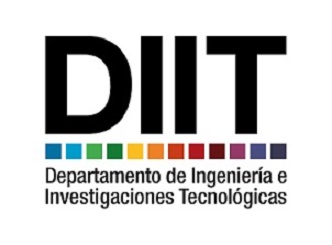Analítica del aprendizaje sobre clases sincrónicas en entorno virtual mediante técnicas de procesamiento de lenguaje natural
Resumen
La analítica del aprendizaje se refiere a la medición, recopilación, análisis e informes de datos relacionados con los estudiantes y sus entornos de aprendizaje.
La medición del desempeño sobre ambientes virtuales de aprendizaje se ha convertido en una interesante herramienta para comprender y optimizar la experiencia educativa en plataformas digitales.
El enfoque aborda la implementación progresiva de analítica avanzada de aprendizaje para comprender y mejorar el proceso de aprendizaje a partir del análisis de los datos generados por las interacciones de los estudiantes en clases virtuales sincrónicas.
Este trabajo se basa en la utilización de técnicas de procesamiento de lenguaje natural para identificar las distintas variables a partir de las transcripciones de los registros grabados durante las clases y la aplicación de modelos de aprendizaje automático para medir su desempeño.
El estudio propone analizar las interacciones mediante la identificación de variables y la elaboración de los indicadores de desempeño relacionados a las dimensiones conductual, emocional y cognitiva.
Los resultados pretenden aportar valor en la mejora de los procesos educativos en línea para optimizar la experiencia de aprendizaje.
Citas
Artificial Intelligence. IEEE Intelligent Systems
(vol 17, art 5, pag 84 - 85)
[2] Chen, L., Chen, P., & Lin, Z. (2020). Artificial
Intelligence in Education: a review. IEEE Access,
8, 75264-75278.
[3] Martin, F., Sunley, R., & Turner, P. (2019).
"Student engagement in online learning
environments: A literature review." The
International Journal of Information and Learning
Technology, 36(4), 284-29.
[4] Fredricks, Blumenfeld & Paris, A. H. (2004).
"School engagement: Potential of the concept, state
of the evidence." Review of Educational Research,
74(1), 59-109
[5] Bower, M., Cavanagh, M., & Moloney, R.
(2015). "Designing a Blended Learning
Environment: A Case Study of Teaching Business
Information Systems." International Journal of
http://reddi.unlam.edu.ar Pág: 29
Vol.:10-Nro.1 (julio-2025)
Educational Technology in Higher Education,
12(1), 1-15
[6] Woolf, B. P. (2010). Building Intelligent
Interactive Tutors: Student-Centered Strategies for
Learning. Ed. Elsevier.
[7] Davenport, T. H., & Ronanki, R. (2018).
"Artificial intelligence for the real world." Harvard
Business Review, 96(1), 108-116
[8] Jurafsky, D., & Martin, J. H. (2020). “Speech
and Language Processing: An Introduction to
Natural Language Processing, Computational
Linguistics, and Speech Recognition”. Ed.
Pearson.
[9] Baker, R. S., D'Mello, S. K., Rodrigo, M. M.,
& Graesser, A. C. (2019). "Better understanding
student engagement and learning through data
mining and machine learning techniques."
Computers in Human Behavior, 100, 68-75.
[10] Machova K., Szaboova M., Paralic J., &
Mikco (2023). "Detection of emotion by text
analysis using machine learning." Page 3.
[11] Siemens, G. (2013). "Learning analytics: The
emergence of a discipline." American Behavioral
Scientist, 57(10), 1380-1400
[12] McMurtrie Beth (2020). Preparing for
different kind of classroom. The Chronicle of
higher education Inc. (art 1, pag 5-8). Washington
[13] Baker, R.S., & Yacef, K (2009). “The state of
educational data mining in 2009”. Proceedings of
2nd Conference on educational Data Mining, 3-13
[14] Vaswani, A., Shazeer, N., Parmar, N.,
Uszkoreit, J., Jones, L., Gomez, A., Kaiser, Ł., &
Polosukhin, I. (2017). "Attention is all you need."
Proceedings of the 31st International Conference
on Neural Information Processing Systems
(NeurIPS 2017), 5998-6008.
[15] Bel W., Algoritmos y estructuras de datos en
Python. Un enfoque ágil. Facultad Ciencia y Tec.
(2020). pag17. Ed Uader.
[16] Garrison, D. R., Anderson, T., & Archer, W.
(2000). "Critical thinking, cognitive presence, and
computer conferencing in distance education."
American Journal of Distance Education, 15, 7-23
[17] Freeman, S., et al. (2014). Active learning
increases student performance in science,
engineering, and mathematics. Proceedings of the
National Academy of Sciences, 111(23), 8410-
8415.
[18] Kotsiantis, S. B., & Pintelas, P. E. (2004).
Data Preprocessing for Supervised Learning.
International Journal of Computer Science, 1(1),
111-116.
[19] Zhao X., Jiang Z. & Gray J., (2020) “Text
Classification and Topic Modeling for Online
Discussion Forums”
. Trends and Applications of
Text Summarization Techniques. (ch 6) 151-166
[20] Devlin, J., Chang, M. W., Lee, K., &
Toutanova, K. (2019). "BERT: Pre-training of
Deep Bidirectional Transformers for Language
Understanding." Proceedings of NAACL-HLT,
4171-4186
[21] Blei, D. M., Ng, A. Y., & Lafferty, J. D.
(2003). "Latent Dirichlet allocation." Journal of
Machine Learning Research, 3, 993-1022







